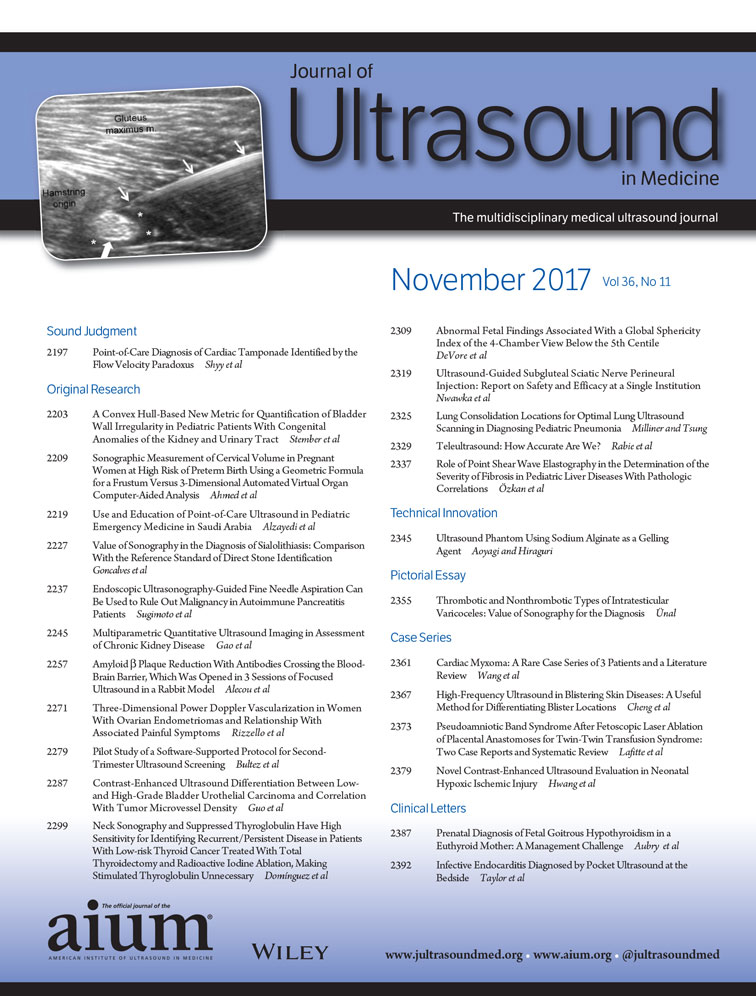Value of Sonography in the Diagnosis of Sialolithiasis: Comparison With the Reference Standard of Direct Stone Identification
Abstract
Objectives
The aim of this study was to assess the effectiveness of sonography for diagnosing sialolithiasis in comparison with the existing reference standard of direct identification of a stone.
Methods
A total of 659 glands with signs of obstructive sialadenopathy were evaluated retrospectively. Sonographic examinations of the large head salivary glands had been performed initially in all cases. Direct depiction of a stone during sialoendoscopy or transoral ductal surgery or observation of stone fragmentation with discharge of concrements after extracorporeal shock wave lithotripsy, was regarded as definitive evidence and as the reference standard for the presence of sialolithiasis. The sonographic results were compared with those for direct identification of stones.
Results
The sensitivity of sonography was 94.7%, with specificity of 97.4%, a positive predictive value of 99.4%, and a negative predictive value of 79.6%. Stones that were not diagnosed correctly on sonography were most often located in the distal area of the duct.
Conclusions
These results show that sialolithiasis can be diagnosed by sonography with a high degree of certainty. Sonography thus appears to be highly appropriate as the examination method of choice.




